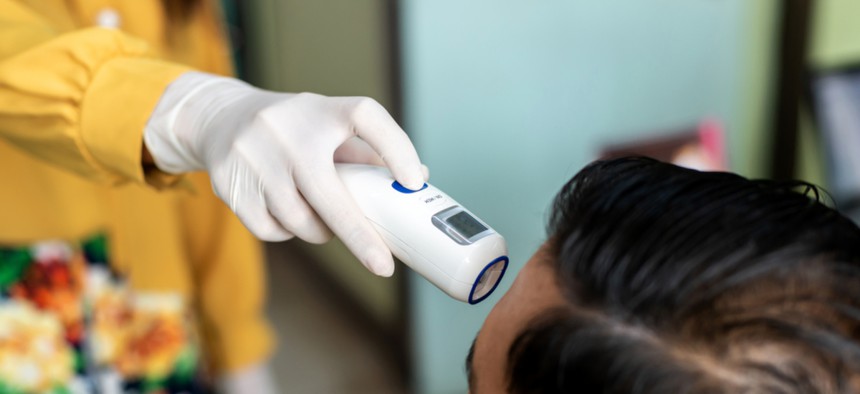Homeland Security Testing Lab Wants to Hear About the Best Temperature Screening Tools in the Market

Thammanoon Khamchalee/Shutterstock.com
The tools will be assessed and included on a list of recommended products for federal and local emergency responders and law enforcement.
The Homeland Security Department’s technology testing lab wants to identify the best point-in-time temperature reading devices in the market to help first responders nationwide make better decisions about buying COVID-19 screening tools.
The National Urban Security Technology Laboratory issued a request for information to poll the market about current technologies available to perform fast, accurate temperature readings for emergency responders and protective services, such as law enforcement or federal agency security.
“Temperature screening technologies are one of several tools in our arsenal that can help reduce the spread of COVID-19,” NUSTL Senior Technologist Bhargav Patel said in a statement Wednesday. “While screening for mass fevers may not be a panacea for getting back to ‘normal’ given the reported asymptomatic case rates, it becomes even more important to explore and use every possible tool that we have at our disposal.”
Based on the results, NUSTL and the Science and Technology Directorate’s System Assessment and Validation for Emergency Responders, or SAVER, program will make recommendations to help federal and local first responders with acquiring such tools.
“The SAVER program conducts objective assessments and validations on commercially available equipment and systems and develops knowledge products that provide relevant equipment information to the emergency responder community,” according to the RFI. “Information provided by the SAVER program will be shared nationally with the responder community, providing a life- and cost-saving asset to DHS, as well as to federal, state and local responders.”
NUSTL is specifically searching for contactless, non-invasive thermal imagers able to:
- Read people between the height of 0.5 to 2.5 meters, or 1.6 to 8.2 feet.
- Get a reading from 2 meters—or about 6.5 feet—or further away.
- Capture a reading within 1 second or less.
- Give an exact temperature reading within 0.2 degrees Celsius.
- Be mounted on a tripod or various surfaces.
The RFI includes a 19-question survey for respondents to fill out.
“NUSTL is committed to providing our stakeholders with actionable scientific data and strong technology options as they continue to stand up and implement their response plans,” Director Alice Hong said in the statement.
Responses to the RFI are due by 5 p.m. August 31.






